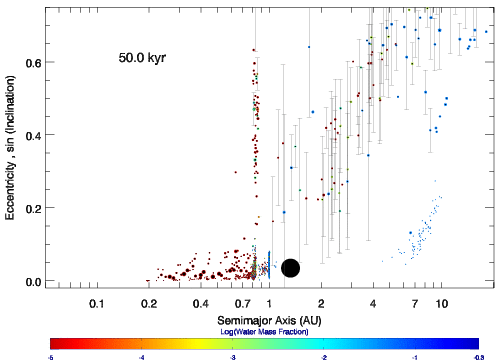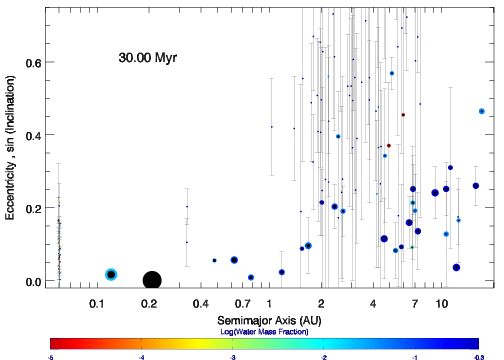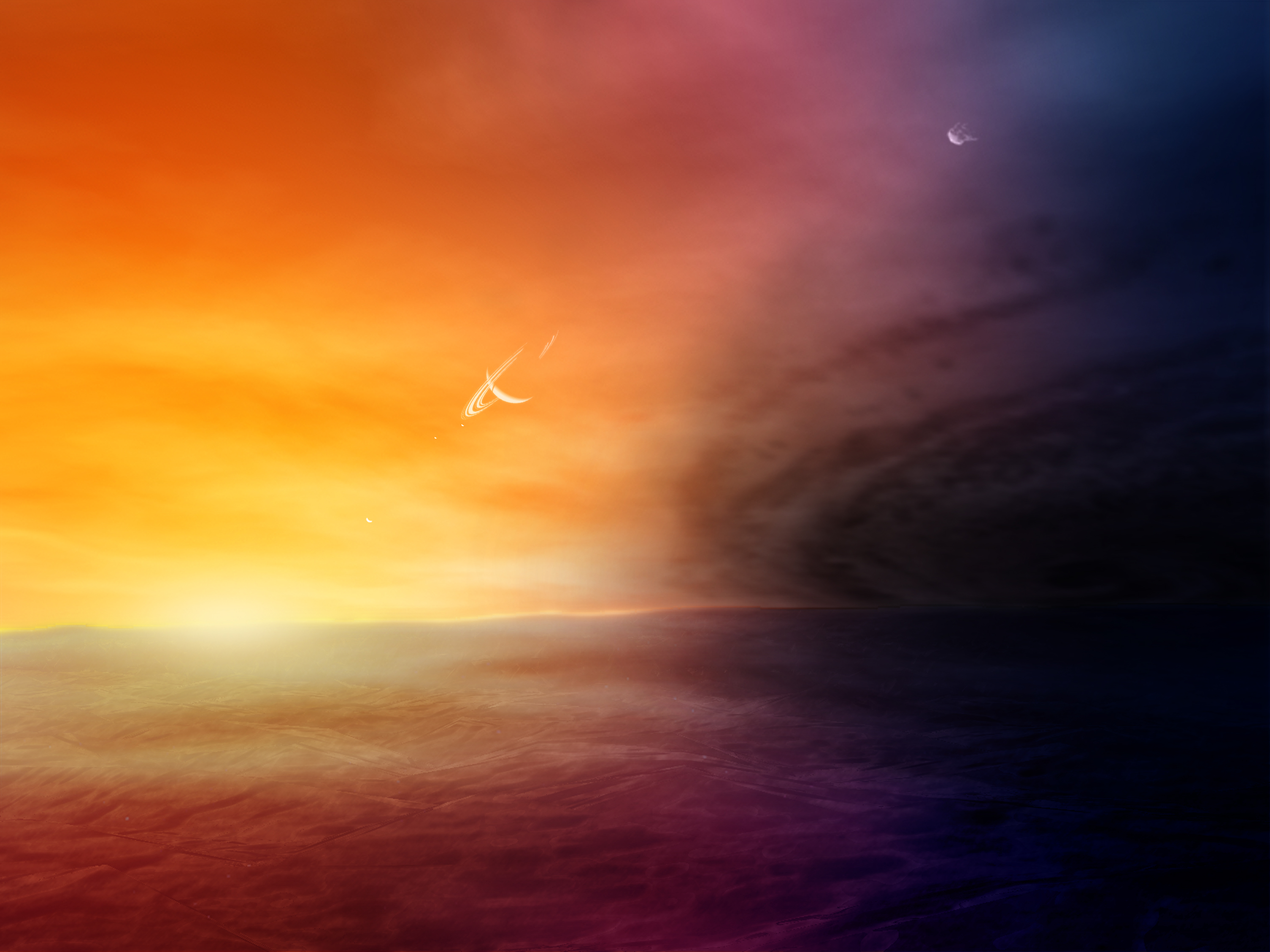Terrestrial planet accretion with an inward-migrating giant planet
After (even during) their formation, giant planets are subject to torques from the gaseous protoplanetary disks from which they formed, and so their migrate. The following movies take a look at the effect of a migrating giant planet on the dynamics of small rocky/icy bodies, with a particular emphasis on the possibility of terrestrial planet formation. These movies are from Raymond et al (2006) and Mandell et al (2007).
In this first movie a Jupiter-mass giant planet migrates through a disk of rocky planetary embryos and planetesimals, from 5 AU in to 0.5 AU. As it migrates, it shepherds material interior to its orbit: in particular, the giant planet uses its interior 3:2 and 2:1 mean motion resonances to push material inward -- those resonances can be seen as the "vertical" pileups of objects interior to the giant planet's orbit.

This next movie shows the much longer-term evolution of a similar system. Here, a Jupiter-mass giant planet migrates from 5 AU in to 0.25 AU in the first 100,000 years. During the migration, about half of the solid material initiall interior to the giant planet's orbit was shepherded inward to form two "hot super Earth" planets (that later merge), and the other half got too close to the giant and was scattered outward. The gaseous protoplanetary disk survived for 10 million years and subsequently acts to damp the eccentricities of scattered embryos. At the end of the simulation (200 million years), two planets are particularly interesting: a 4 Earth-mass planet just interior to the 2:1 resonance with the close-in giant planet, and an extremely water-rich 3 Earth-mass planet at 0.9 AU.

Given that our paper (Raymond et al (2006)) was published in Science, we had a press release. One of the most interesting aspects of the paper is the very high water contents of terrestrial planets that form in the "wake" of the migrating giant planet. On that theme, we had an artist's impression of the view from such a planet done by Nahks Tr'Enhl. Nahks also made a version including a potential inhabitant of such a planet.

BACK TO MAIN PAGE


